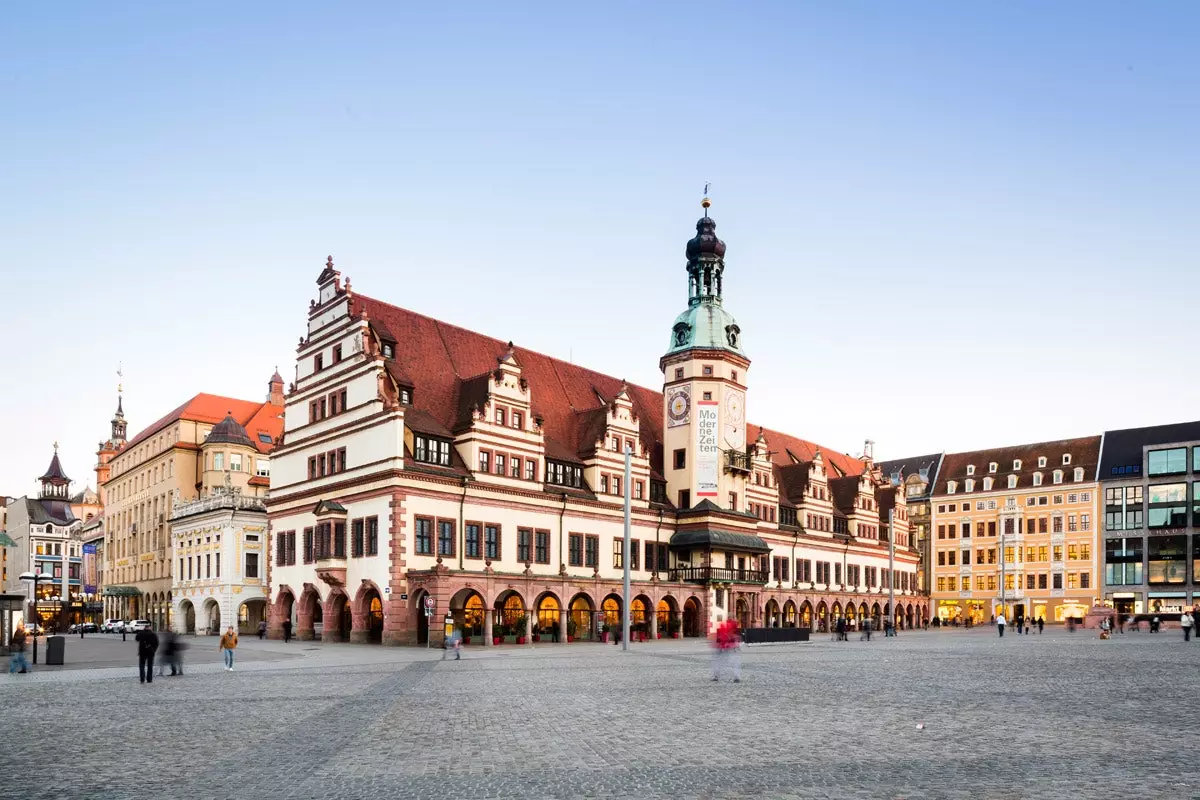
The 'hot spots' of the city
1. A CINEMA WALK THROUGH THE HAUPTBAHNHOF
Leipzig main train station is a film reference: in this building, which last year held the 100 years of its opening , numerous films and series have been filmed, nationally and internationally. Also has an underground mall and in December 2013 one of the oldest lines in the city: the one that connects the central station with the Leipzig Bayerischer Bf, passing through the Leipzig Markt, the main square of the city.
Near the central station stands the mythical Hotel Astoria , an imposing building built in 1915 as a hotel complex and which was consolidated as the leading luxury hotel during the years of the RFA. After more than 20 years empty it was bought in the middle of this year by a French hotel developer and rumors say that it may soon open its doors again... or at least, that is what the inhabitants of Leipzig hope. Just in case, there is already a popular initiative that seeks save this historic hotel from ruin or end up knocked down to build another building.
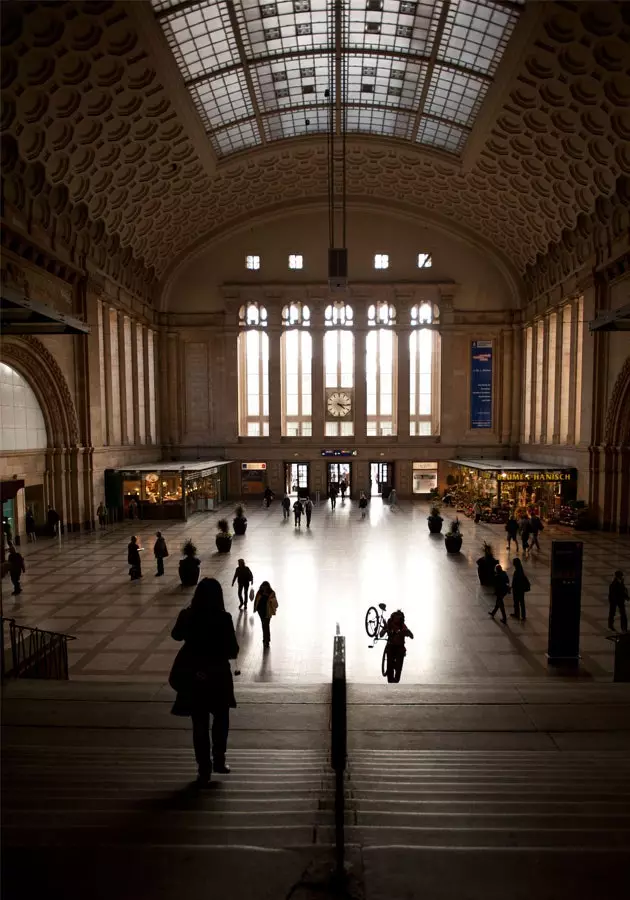
A most photogenic season
two. REMEMBERING THE MONTAGSDEMO
Although it is very easy to get around Leipzig by tram, We recommend walking through the center. From the central station it takes ten minutes to reach the Market Square: taking the Nikolaistrasse, one reaches the Nikolaikirche, famous enclave in the recent history of the city. The calls started here montagsdemonstrationen , the peaceful Monday protests of the citizens of Leipzig which spread to other cities in the German Democratic Republic and which They paved the way for the fall of the Berlin Wall.
Beginning in Leipzig on September 4, 1989, East German citizens began to flock to major GDR cities to shouts of “Wir sind das Volk” (We are the people), “Auf die Strasse” (to the streets) and Keine Gewalt (without violence) to peacefully protest the political situation. On October 9, 1989, the Montagsdemonstration brought together some 70,000 people. That day, the GDR police did not attack the demonstrators and allowed them to walk the full length of the march, starting and ending at the Nikolaikirche. The reason is still unknown for which the Stasi did not act; that turning point would mark change towards system change. In front of the church stands a monument that commemorates those protests, and from there one reaches the Grimmaische Straße , which would be the main street.
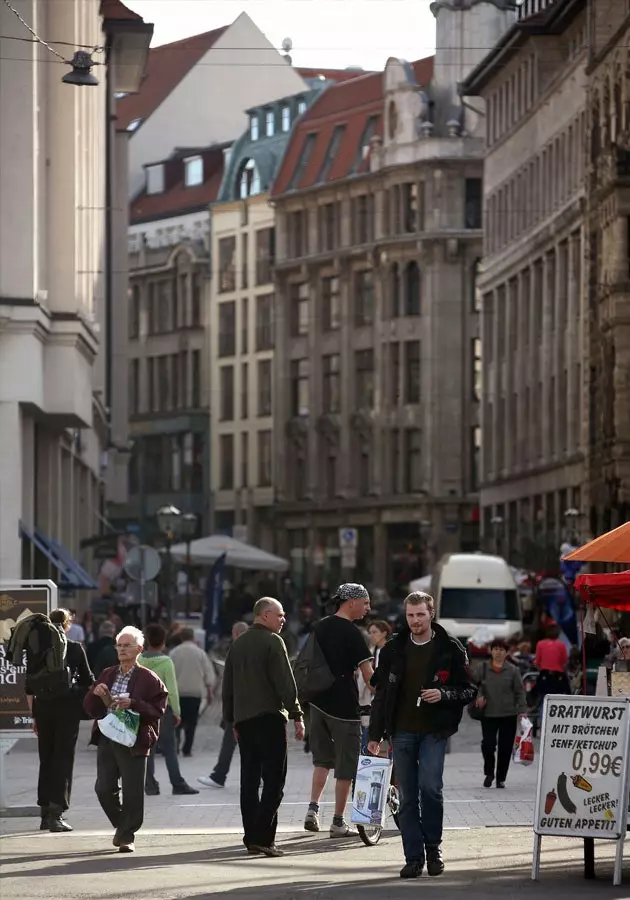
Nikolaistrasse, full of life
3. THE MARKET SQUARE, GOETHE AND BACH
Going down the street, that is, turning to the right (then we will go back up it) is the Leipzig Market Square, which once again becomes the he neuralgic meeting point of the city during Christmas, when it hosts the Christmas Market. Dominating the square rises the old town hall building (Altes Rathaus) built in the 16th century and still has a sumptuous Baroque tower. Inside it houses the city museum.
Next to the market, a little further south, stands the thomaskirche (Igleisa de Santo Tomás), where the mortal remains of Johann Sebastian Bach. The composer was director (Cantor) of the children's choir of this church for 23 years. The choir (Thomanerchor), made up of more than 90 children, is one of the most famous in Germany and performs three times a week.
Next to the entrance to the Church there is a statue reminiscent of Bach. In front of the temple there is also the statue of another famous German composer, Felix Mendelssohn , who was conductor of the Gewandhaus orchestra, where we will go next after returning to Grimmaische Straße.
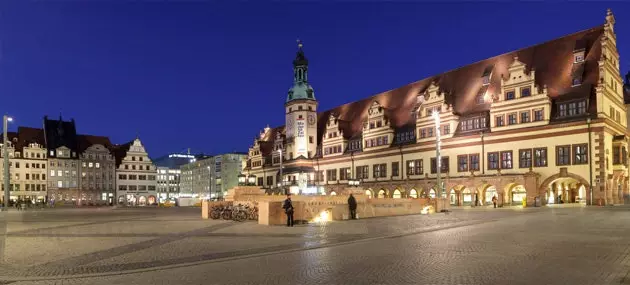
The Altes Rathaus impresses
Four. FOLLOWING THE GEWANDHAUS TO AUGUSTUSPLATZ
Continuing with renowned German artists and going up the Grimmaische Str. the A uerbachs Keller, a wine cellar (and restaurant) already famous in the 16th century. At its gates are two statues with two scenes from Faust of Goethe, who frequently visited this bar during his student years at the University of Leipzig and that he captured this restaurant in one of the scenes of his famous drama. Opposite, at the Naschmarkt stands a statue in honor of this writer next to one of the city's fountains, the Lions' Fountain (Löwenbrunnen).
If we continue walking along this street in the direction of Augustusplatz, we will come across the Zeitgeschichtliches Forum Leipzig, a museum of German history from its partition until 1991: the museum portrays daily life during the GDR years , as well as the reunification process.
The Grimmaische Straße ends at Augustusplatz, the musical center of the city. Here is the opera building, the third oldest in Europe, whose main characteristic is that it does not have its own orchestra: it is the Gewandhaus orchestra, whose headquarters is located at the other end of the square, which performs this function.
The Gewandhaus Orchestra is one of the most famous and oldest in the world. Although its origins go back to the 15th century, it was founded as an orchestra at the end of the 18th century and since then it has been acquiring national and international fame. Since 1981 they have occupied the building on Agustusplatz and have 175 professional musicians.
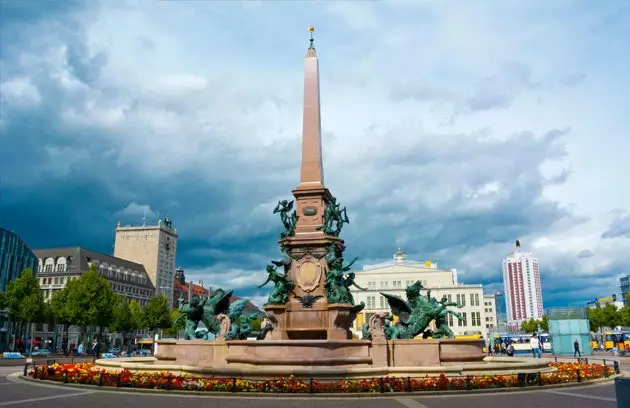
The beautiful Augustusplatz
5. THE KARL MARX UNIVERSITY
On Augustusplatz was the Paulinkirche, destroyed during the Soviet years. The temple, originally owned by the Church, was donated to the university during the Protestant Reformation and inaugurated by Luther; furthermore, it was here that Bach served as conductor. Since 2009, in its place stands a new university building, the Paulinum, which has a room for religious services and an auditorium. The main façade, located on the Agustusplatz reminiscent of the old church. Next to it are several campus buildings, in the same place where the old university was created.
Known during the time of the German Democratic Republic as Karl Marx University, the University of Leipzig is the second oldest in Germany. It was founded on December 2, 1409 and has been in operation ever since, even during world war II . Here they studied prestigious Nobel prize winners and scientists (Paul Ehrlich, Goethe, Heisenberg, Leibniz, Lessing, Nietzsche, Wagner...) and even the current German chancellor, Angela Merkel, as well as the current president of the Republic of Chile, Michelle Bachelet.
Also on Agustusplatz is the City Hochhaus, the tallest building in the city, which was originally part of the University buildings. The building, which has the shape of an open book , is known as the tooth of wisdom, and on its top floor you can enjoy views of the city from a restaurant-viewpoint known as Panorama Tower.
In front of this skyscraper and behind the Gewandhaus you can see the only remains of the city wall: the Moritzbastei. From 1974, and until 1979, he was rebuilt by the students of the University (among them, Merkel) and in 1982 it was inaugurated as a student club. Eleven years later it ceased to belong to the University and was established as a commercial foundation. It is currently a cultural center and a club.
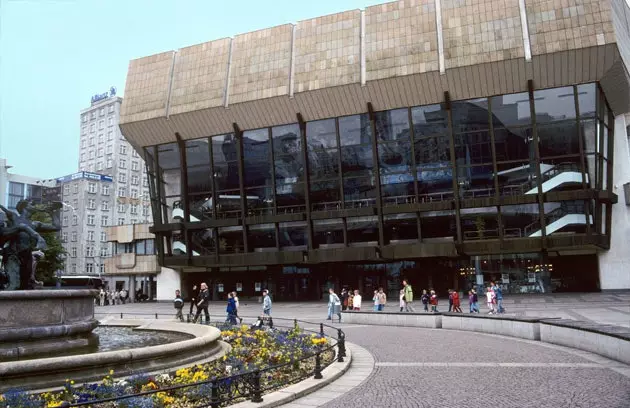
The Gewandhaus, opera without its own orchestra
6. FROM THE HEIGHTS
Not only from the Panorama Tower (142 meters high) you can see Leipzig from above: the Neues Rathaus tower (new town hall) rises almost 100 meters above the ground and has a viewpoint. This building, which despite its name dates from early 20th century , has been the seat of the municipal government since 1905 and is not far from the Moritzbastei, following the Schiller Straße.
But in addition, there is another building with a considerable height, 91 meters, located to the southeast of the city (and which is accessed by tram or car): the Völkerschlachtdenkmal , that is to say the monument to the battle of the nations. This concrete behemoth, covered with granite slabs and with more than 500 steps to its upper platform, was inaugurated in 1913 and had as a guest the Kaiser Wilhelm I.
The monument commemorates Napoleon's defeat at Leipzig in 1813, in a bloody battle in which a coalition of nations (Prussia, Russia, Sweden and Austria) faced Napoleon's troops, and remember all the fallen soldiers during the battle. In front of it there is an artificial lake that symbolizes blood and tears spilled during that war. Next to the monument you can visit the Leipzig's largest cemetery.
From here you can go back to the Hauptbahnhof or to the center by tram.
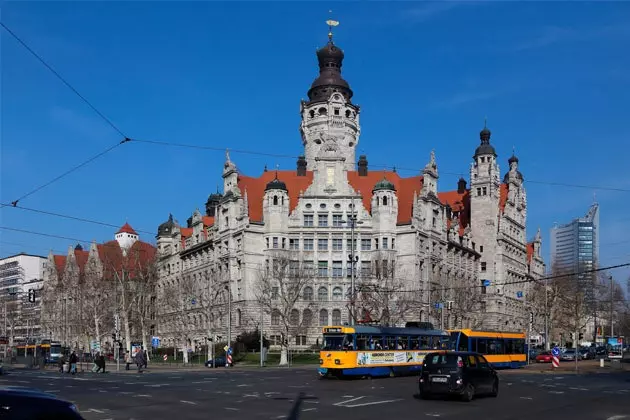
The imposing new town hall
WHAT TO EAT IN LEIPZIG: GASTRONOMIC SPECIALTIES
Of course, the visit also includes tasting the specialties of the city, and we can start doing it in the Luke Coffee , where you can have a coffee and a piece of cake, or in the already mentioned Goethe's Faust restaurant . And although there are multitude of establishments with international cuisine to delight all kinds of palates, the city has several specialties :
- Leipziger Allerlei: It is usually served during the asparagus season, although it can be enjoyed all year round. It is a vegetable dish with peas, carrots, asparagus and mushrooms. Cauliflower can be added and can be eaten as a main dish or as a side dish.
- Leipziger Bachpfeiffen and Bachtaler : they can be sampled at the ** René Kandler patisserie ,** which created them to commemorate the 250th anniversary of the death of J.S. Bach . In the shape of a coin or a pipe, they are two chocolate covered candy and filled with either hazelnut cream (Bachpfeiffen) or ganache (Bachtaler).
- Leipziger Lerche : a kind of muffins based on pastaflora and stuffed with marzipan
- Leipziger Raebchen : something like some plum and marzipan filled donuts They are served hot and sprinkled with icing sugar.
- Leipziger Allasch: a distillate of caraway (cumin) that is usually taken cold after a heavy meal.
- Leipziger Gose : the beer from the city.
A fairly affordable restaurant where you can taste some of these specialties or other German culinary delights is the ** Bayerischer Bahnhof **, which, as its name suggests, is located at the head of this station (it can be reached by tram or train).
In addition to the restaurants in the downtown area, it is also worth walk around and sit down to eat in the Südvorstadt , which could be called the Kreuzberg from Leipzig.

Fancy a Leipziger Allerlei?
AND EVEN MORE: TO EXTEND THE VISIT
Clara Zektin, Albertina and Gastehaus am Park
If you still have time to spare and the weather permits, it is worth strolling through Clara Zetkin Park, where one of the main events of the gothic festival , one of the largest in the world. Near the park is the university library the Albertine. Its main treasure, apart from the building itself, are 43 sheets of the Sinaitic Code and the Ebers Papyrus, one of the oldest known medical treatises.
Also near the park is the Gästehaus am Park , the guesthouse that was built during the GDR years to accommodate political and related visits to the regime. Abandoned since the fall of the Berlin Wall, the future of this building has been uncertain. Currently, it appears that the company that owns it is planning knock it down in the face of complaints from the neighbors, who hope that the property will be preserved for cultural and architectural reasons.
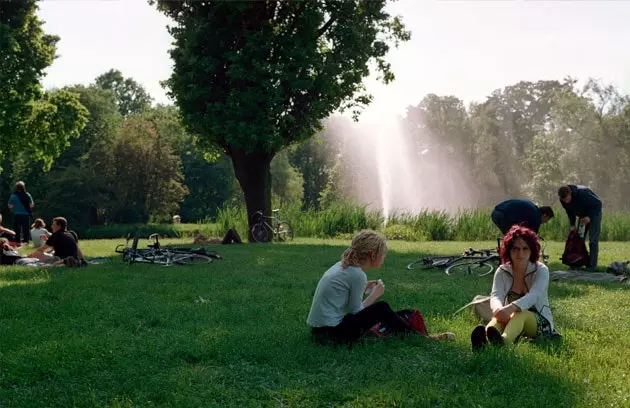
After the walk, a little rest in the park
The Spinnerei and the Karl-Heine-Kanal
Another possible itinerary takes us to the east of the city. Next to the Lindenau district is the Karl-Heine- Kanal, which has nothing to envy to Venice: fifteen are the bridges that this canal has and in good weather, you can enjoy a romantic boat ride.
Also in this neighborhood is the cotton ice cream parlor (Baumwollspinnerei). Once the largest cotton mill in continental Europe, it once had up to 240,000 spindles and inside the enclosure were nurseries, supermarkets and even recreational areas . After the closure of the factory in 1993, a part of it has become an arts center that has galleries, restaurants, designers, architects and all kinds of artists.
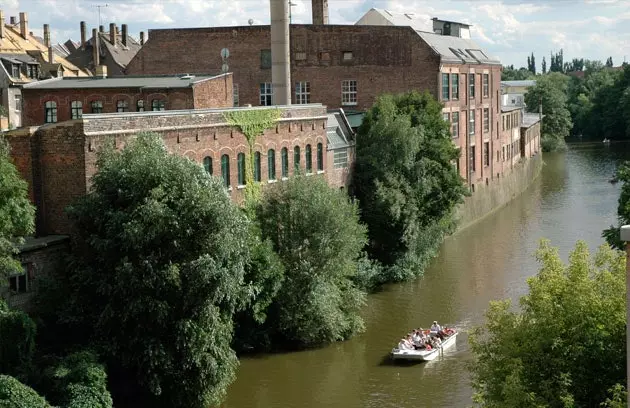
Venice or Leipzig?
Leipzig Messe and the Zoo
The Leipzig Zoo is home to around 850 species and since 2000 it has been governed by the concept of the "zoo of the future", which implies building a natural space with six different thematic zones. Of this new concept, the already finished projects of Pongoland, the area for animals of the orangutan family , Gondwanalad, and l largest covered riverine forest of the world) and its exhibition (and breeding) of felines.
On the outskirts of the city is the new location of the Leipzig Fair. This building has so much tradition and importance in the history of Germany that, during the Nazi era, the name of the city was changed to Reichsmessestadt Leipzig , "the imperial city of commerce" . The most important event it hosts is the Book Fair, the Leipziger Buchmesse, which is celebrated annually. It is the second largest in Germany and focuses on relationship between writers and visitors.
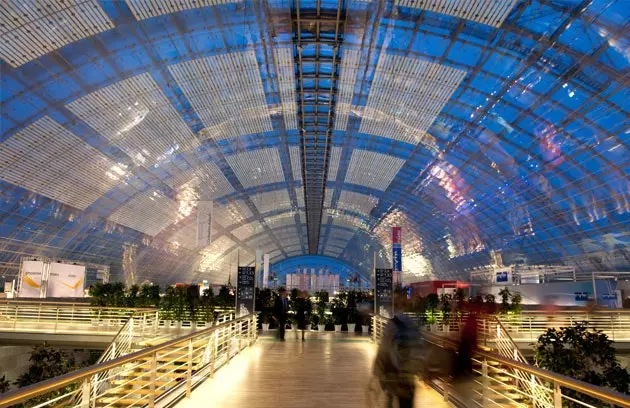
The book fair is serious business here
